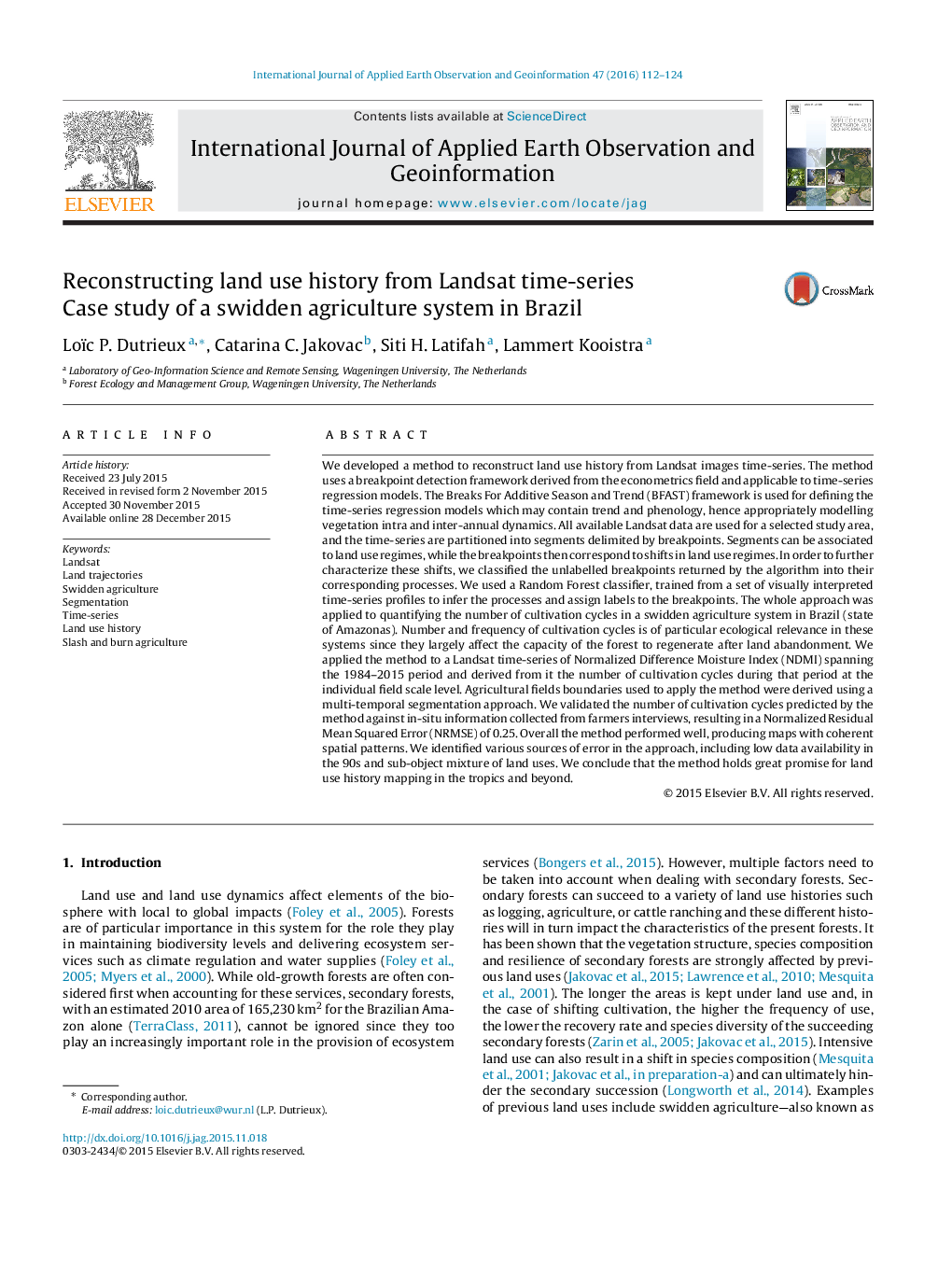| کد مقاله | کد نشریه | سال انتشار | مقاله انگلیسی | نسخه تمام متن |
|---|---|---|---|---|
| 4464643 | 1621810 | 2016 | 13 صفحه PDF | دانلود رایگان |
• A method to reconstruct land use history from Landsat time-series.
• Applied to retrieving land use intensity in a swidden agriculture cultivation system in Brazil.
• Able to capture fast vegetation dynamics such as forest regrowth in the tropics.
• Validated against a set of ground truth observations collected via farmer's interviews.
We developed a method to reconstruct land use history from Landsat images time-series. The method uses a breakpoint detection framework derived from the econometrics field and applicable to time-series regression models. The Breaks For Additive Season and Trend (BFAST) framework is used for defining the time-series regression models which may contain trend and phenology, hence appropriately modelling vegetation intra and inter-annual dynamics. All available Landsat data are used for a selected study area, and the time-series are partitioned into segments delimited by breakpoints. Segments can be associated to land use regimes, while the breakpoints then correspond to shifts in land use regimes. In order to further characterize these shifts, we classified the unlabelled breakpoints returned by the algorithm into their corresponding processes. We used a Random Forest classifier, trained from a set of visually interpreted time-series profiles to infer the processes and assign labels to the breakpoints. The whole approach was applied to quantifying the number of cultivation cycles in a swidden agriculture system in Brazil (state of Amazonas). Number and frequency of cultivation cycles is of particular ecological relevance in these systems since they largely affect the capacity of the forest to regenerate after land abandonment. We applied the method to a Landsat time-series of Normalized Difference Moisture Index (NDMI) spanning the 1984–2015 period and derived from it the number of cultivation cycles during that period at the individual field scale level. Agricultural fields boundaries used to apply the method were derived using a multi-temporal segmentation approach. We validated the number of cultivation cycles predicted by the method against in-situ information collected from farmers interviews, resulting in a Normalized Residual Mean Squared Error (NRMSE) of 0.25. Overall the method performed well, producing maps with coherent spatial patterns. We identified various sources of error in the approach, including low data availability in the 90s and sub-object mixture of land uses. We conclude that the method holds great promise for land use history mapping in the tropics and beyond.
Journal: International Journal of Applied Earth Observation and Geoinformation - Volume 47, May 2016, Pages 112–124
